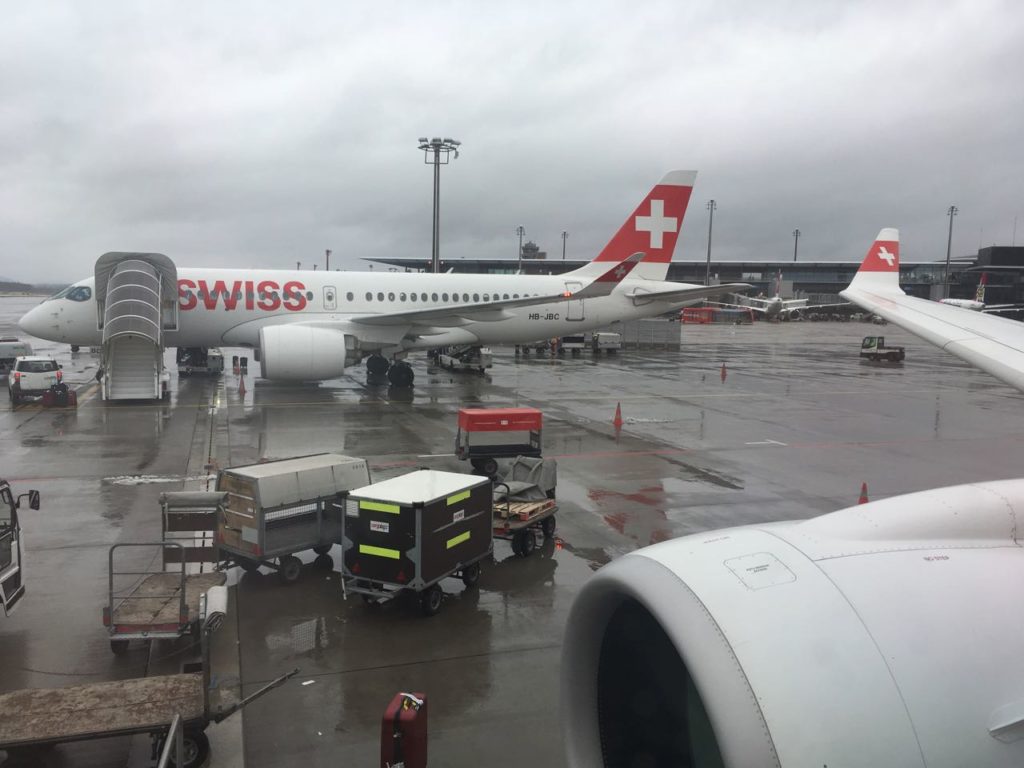
Swiss Global Airlines is the first carrier to operate the Bombardier CSeries aircraft, which promises wide-body comfort in a relatively small single-aisle airplane.
I had my first experience flying the world’s newest short-haul passenger jet this past weekend. My 50-minute connecting Swiss Global Airlines flight from Zürich Kloten (ZRH) to Paris Charles de Gaulle (CDG) on a Bombardier CS100 turned out to be a great experience.
There has been quite a lot of press around the CSeries program recently. Under pressure from Boeing, the Trump administration imposed what would be a devastating tariff on the new jet. Bombardier then moved undercut the new regulation in a partnership with Airbus, who will build the aircraft in the United States in exchange for control over the CSeries program.
The compromise created an escape route for Bombardier, which has lost serious money thus far on development of the advanced new single-aisle plane. This arrangement will allow Delta to take delivery of 75 of the new planes, beginning next year, without paying one iota of tariff.
Delta plans to use CS100 aircraft to replace its aging MD-88 and MD-90 fleet. The old McDonnell-Douglas airliners are still a personal favorite of mine. The old jets feature a much preferred 2-3 economy seating configuration and an exceptionally quiet ride in the front of the cabin.
The CS100 was impressive in ways I did not expect. Delta fliers should be excited to experience this newest fleet addition. I was seated in business class, though on Swiss this is just a separate section of otherwise economy seats. The 114-seat jet was far more spacious and comfortable than any A320 or 737 variant I’ve flown on. Needless to say, boarding times should be noticeably quicker.
Shhhhh. Quiet!
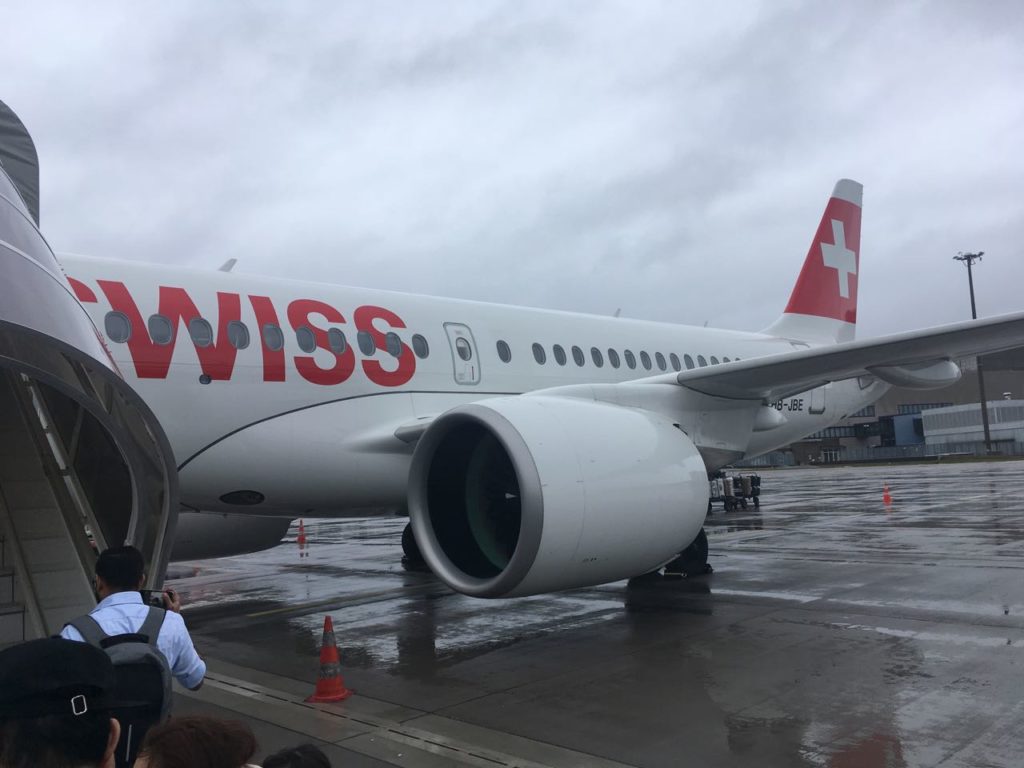
The CS100’s Pratt & Whitney PW1500G engines were a big selling point, according to former Delta CEO Richard Anderson.
Boarding the CS100 from the ground, it was easy to observe many of the plane’s next generation features. The composite fuselage is apparent in the mask-like cockpit window frame. Pratt & Whitney PW1500G Engines feature all the latest noise dampening and efficiency boosting nick nacks.
Bombardier claims the CSeries is the quiest commercial jet in the world. From the cabin, that claim seems credible.
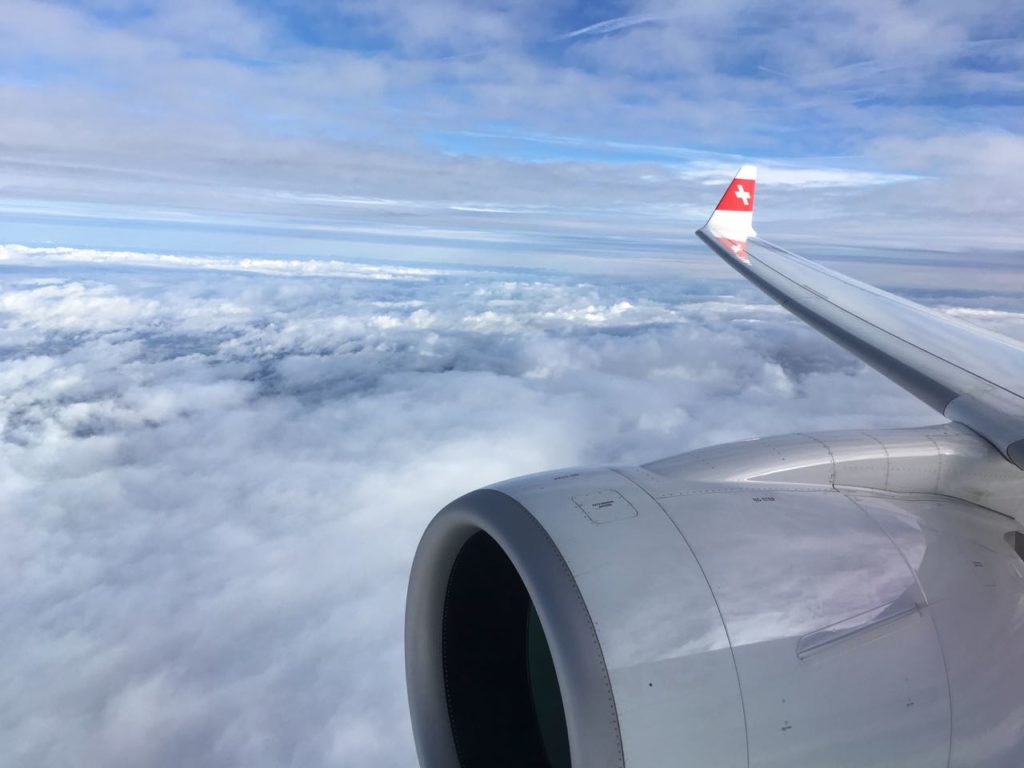
The CS100’s Pratt & Whitney PW1500G engines were nearly silent at cruise. The CS100’s cabin was so quiet you could hear a pen writing on paper.
Once at cruising altitude, the CS100 cabin is quiet, and not just by regional jet standards, I’m talking Dreamliner quiet. Quiet enough to hear your cross-aisle neighbor scratch their scalp. Quiet enough to hear a pen writing on paper one row back. Delta fliers should welcome the peace and calm on board this airplane.
Overall great cabin atmosphere.
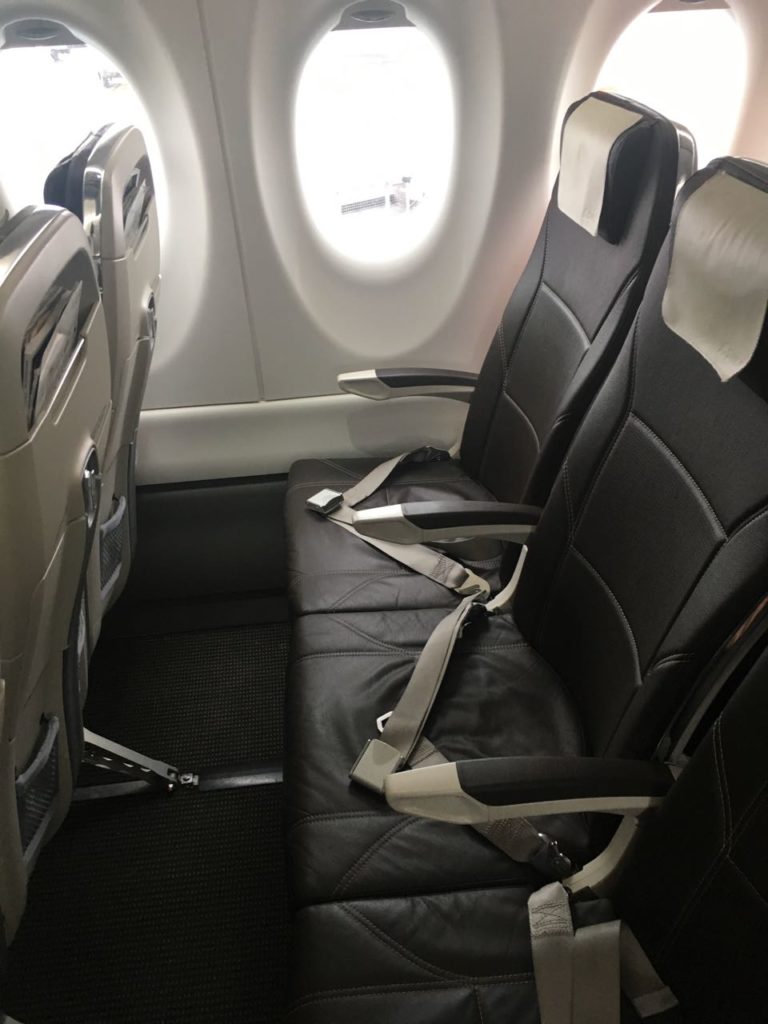
The CS100’s windows are of similar size to the Airbus A350 and Boeing 787. This made for a very bright cabin, and great plane spotting!
The CSeries’ windows are noticeably larger than any other single-aisle jet I’ve been on. The carbon composite fuselage also allows for lower cabin altitudes, similar to next-gen widebody aircraft like the Boeing 787 and Airbus A350.
It’s hard to perceive the physiological effects of such enhancements on a short flight. Still, the air onboard seemed fresher than normal, and the cabin was exceptionally bright.
Thoughtful interior appointments.
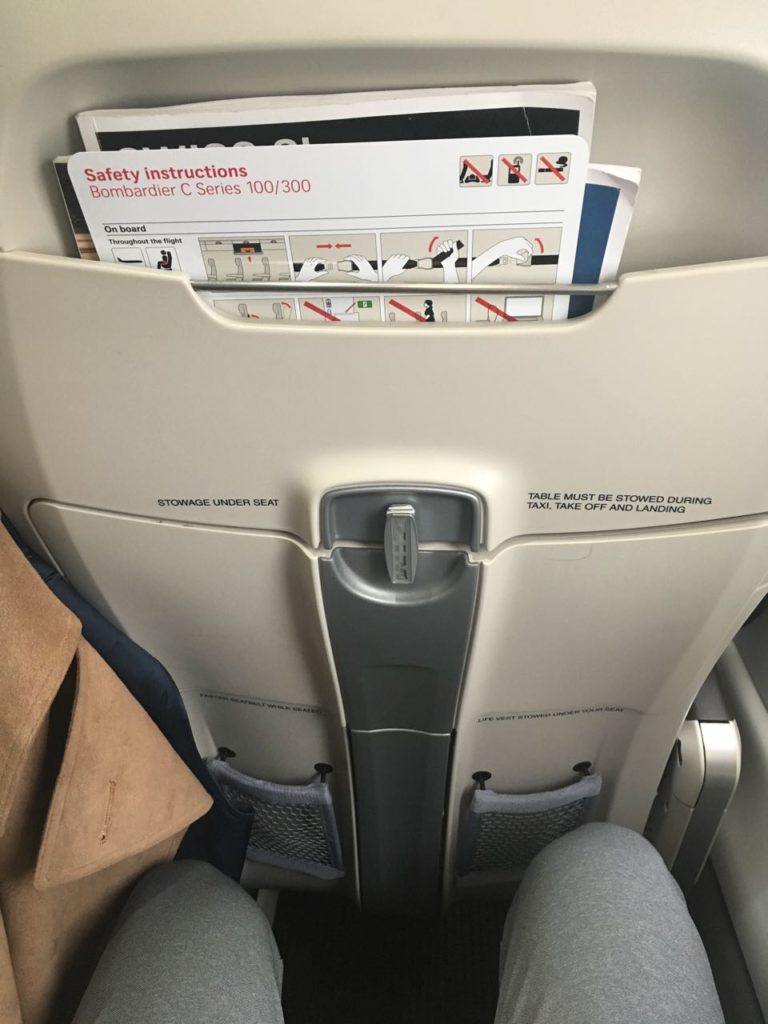
I’m a fan of this tray table design, which minimizes the disturbance felt when a passenger adjusts or lowers the tray table.
Specific aircraft features are left up to airlines, and Delta’s CS100 jets will look different on the inside than Swiss’. Still, features like a 2-3 economy cabin layout are likely to please.
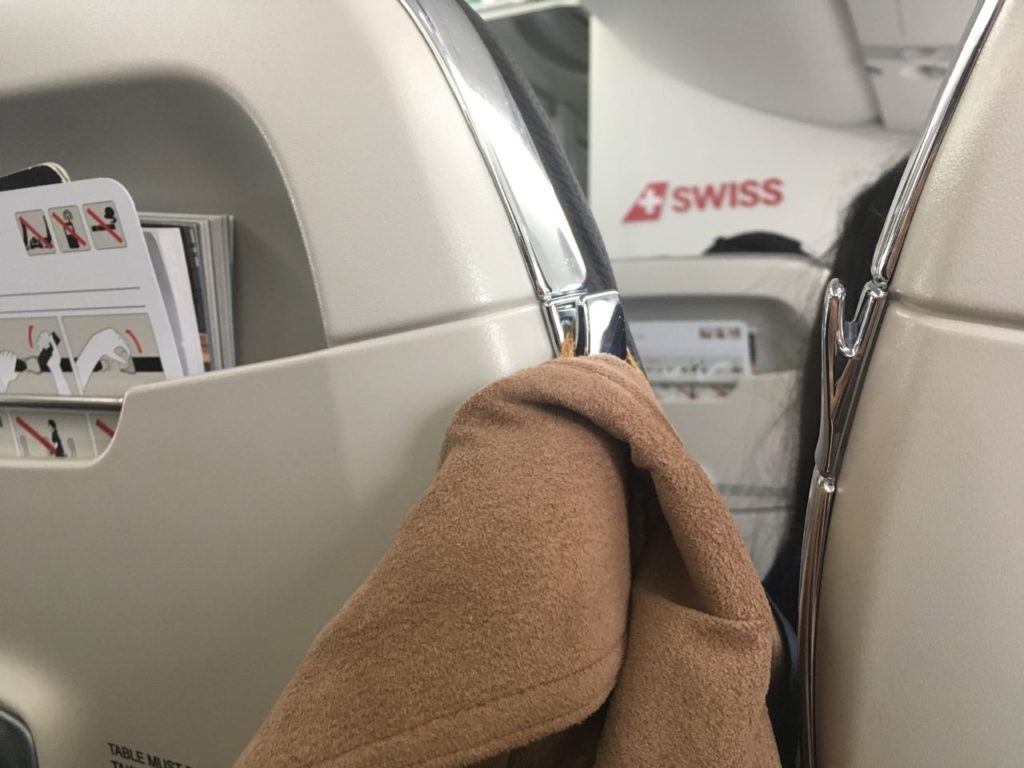
I particularly enjoyed the ZIM Unique seats Swiss chose for their CS100. The seats are built with unique tray table installation designed to minimize disturbances to the passenger seated in front. The seats also featured nifty little coat hooks.
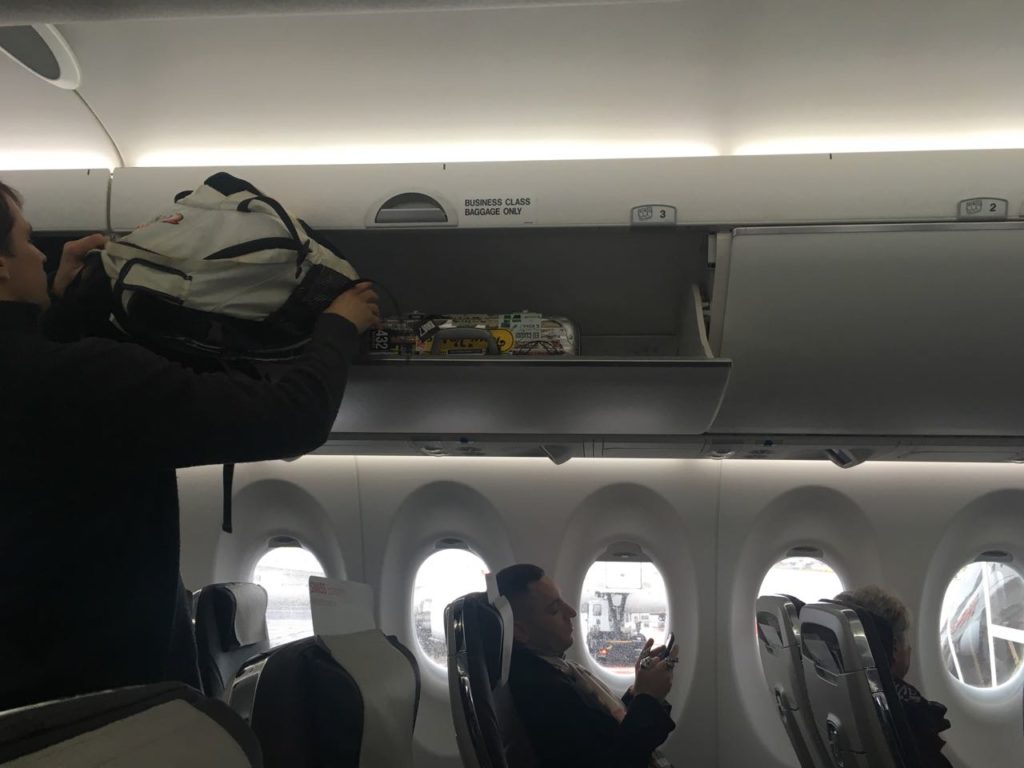
Overhead storage bins were exceptionally large for a 108-seat aircraft.
Also, shout out to Swiss Air for providing the best meal service I’ve ever had on a flight under one hour-long, anywhere in the world. I supposed intra-European business class does have some perks, even if the seats are a non-improvement.
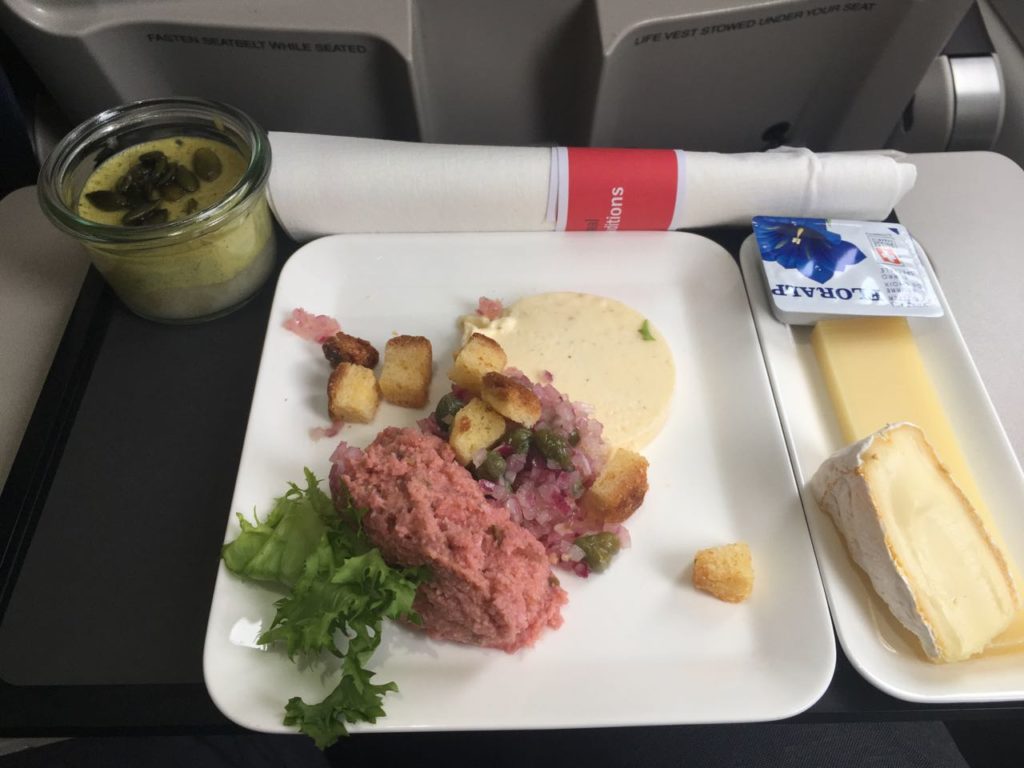
This meal was served on a 50 minute flight between Zürich and Paris. Shame, U.S. airlines, shame.
These adorable little screens might actually make sense.
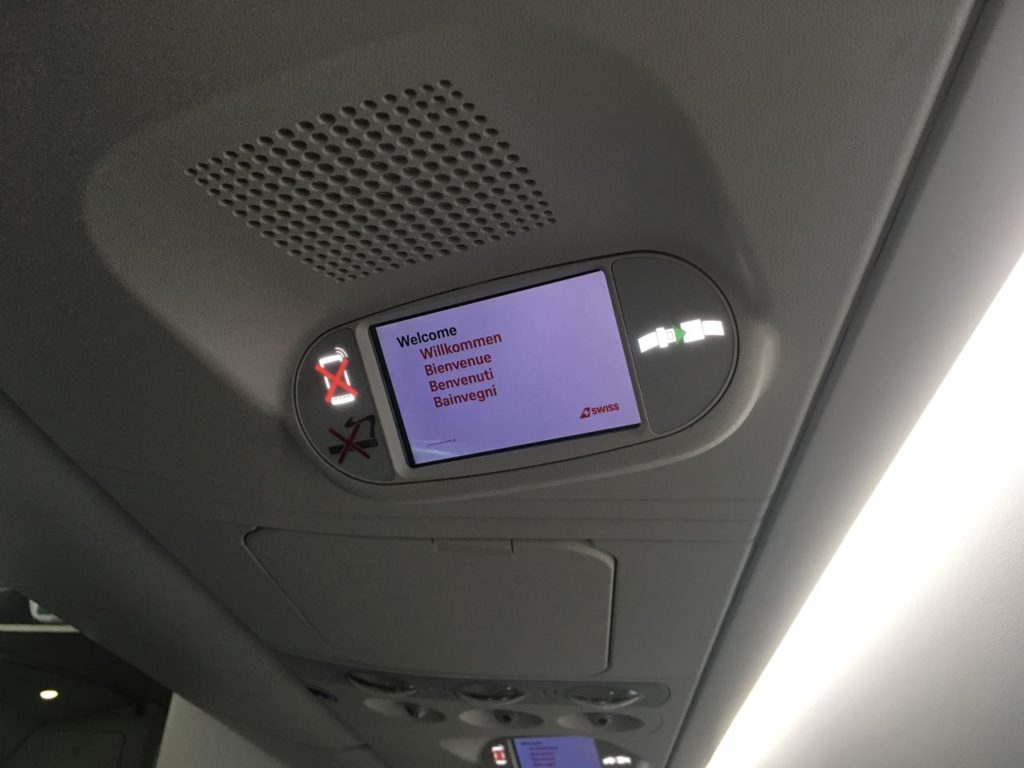
CSeries aircraft come with small overhead monitors installed. Given the waning popularity of IFE screens, these small screens could be a welcome source of flight information.
When I first saw photographs of the CSeries, I was puzzled by these small overhead monitors. I thought overhead displays were great in the 1990s, so why would Bombardier’s next generation of aircraft include small, four-inch LCD screens built into overhead panels.
The screens show basic flight information, a rudimentary air show, and were used to show the pre-flight safety demonstration. In lieu of now endangered in-flight entertainment systems (none of American Airlines’ retrofit domestic aircraft have built-in IFEs), the decision to include basic overhead LCDs may prove prescient.
Performance matters.
Of course, the most important consideration when airlines purchase any new aircraft is the objective performance. The CSeries promises to deliver per-passenger fuel efficiency previously only attainable at significantly larger scale aircraft.
Onboard, performance was apparent in another capacity. Given that this was a full-flight, I was impressed at how the CSeries seemed to just float into the sky.
In conclusion.
I was impressed by the noticeably nicer ride on this airplane. In 2017, improvements in next generation aircraft tend to be subtle if noticeable at all. Still, frequent Delta fliers should enjoy the quieter ride, lower cabin altitude and brighter/more spacious cabin on Bombardier’s new jet once it arrives in late 2018. It’s a shame more airlines haven’t placed orders.
The responses below are not provided or commissioned by the bank advertiser. Responses have not been reviewed, approved or otherwise endorsed by the bank advertiser. It is not the bank advertiser's responsibility to ensure all posts and/or questions are answered.
5 comments
Nice review
[…] Zürich, I hopped onboard one of SWISS’ new Bombardier CS100 (read the review of that flight here), for a nearly effortless entry into […]
[…] investment for Moxy and has placed 60 orders for next generation Bombardier C Series 300 jets, according to an article published in Airline Weekly. This is not a small play. If all the orders are filled, Moxy would become the second largest U.S. […]
I’m glad BA has a competitive market in the US now. Hopefully American will get the CS100
[…] from Amsterdam to Zurich in economy. Like other full-service carriers owned by the Lufthansa Group, Swiss still offers free drinks and a sandwich on […]